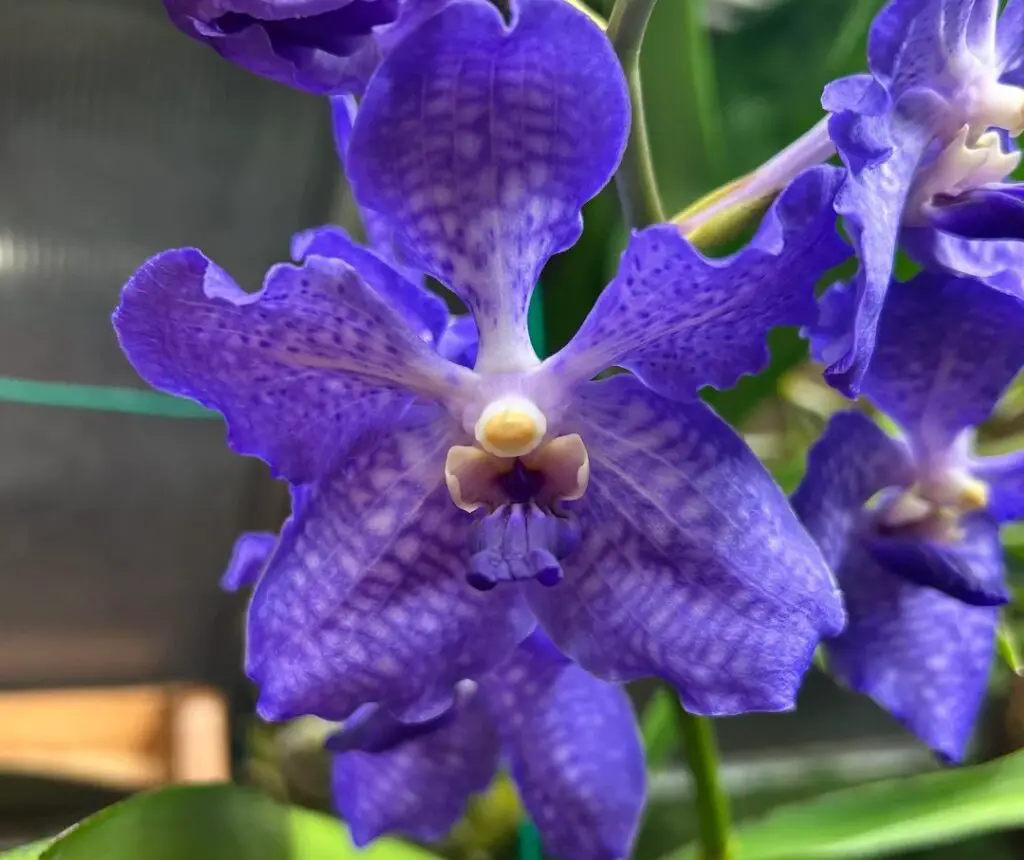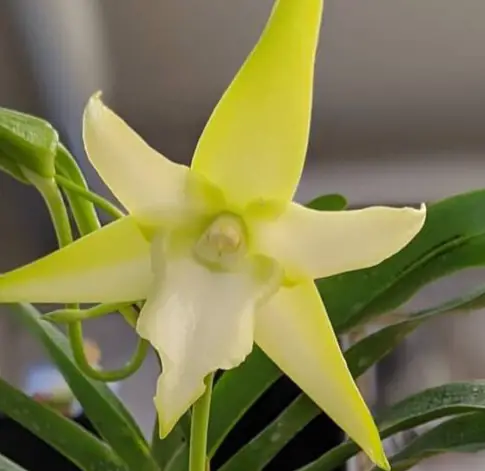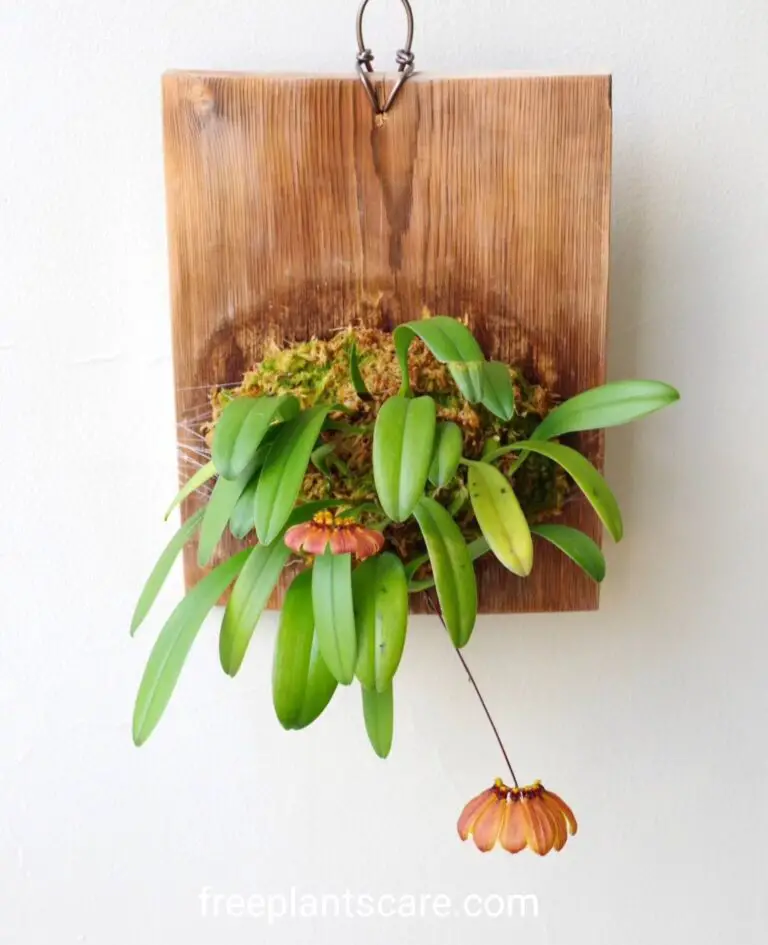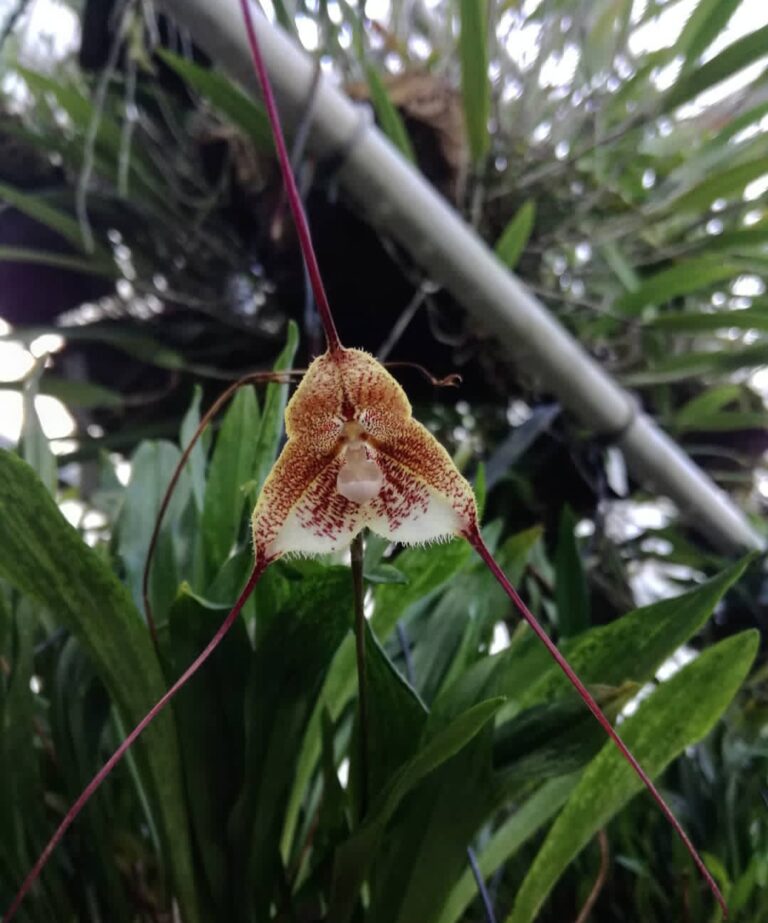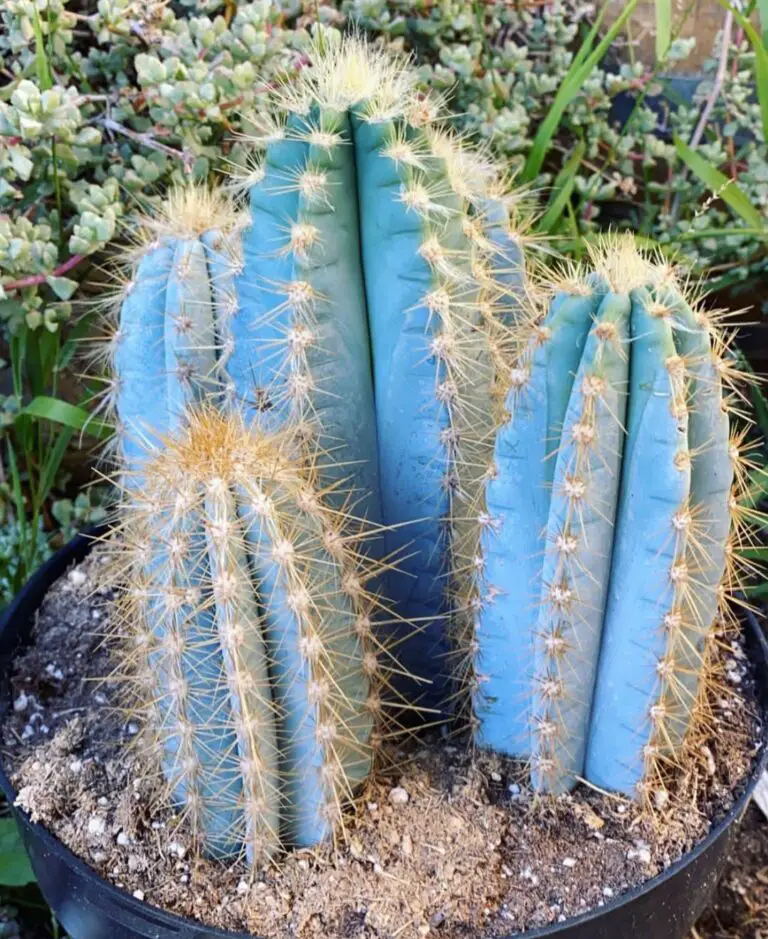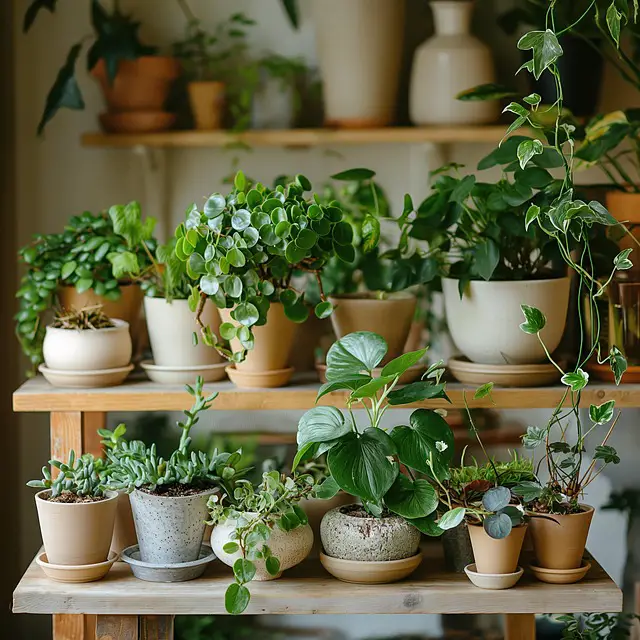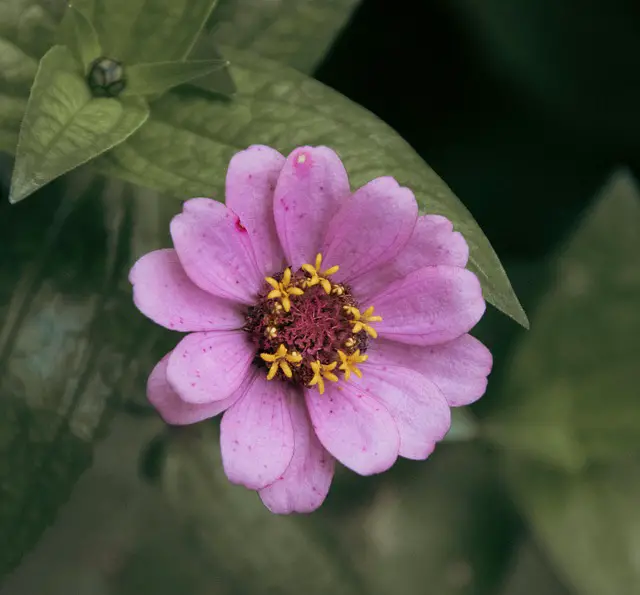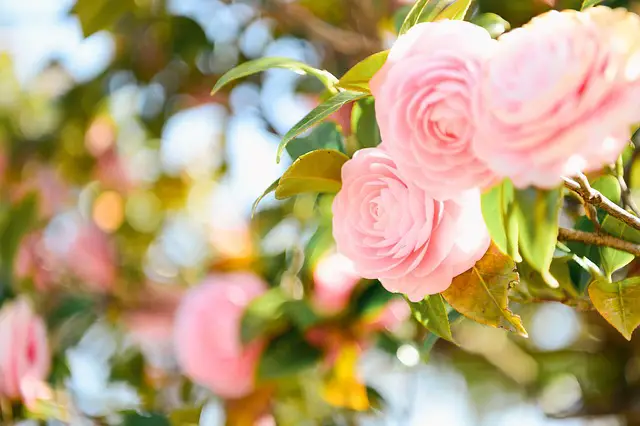The breathtaking Vanda coerulea, known commonly as the Blue Vanda Orchid, is one of the rarest and most enchanting orchids in existence. Its natural bluish-lavender flowers are unlike anything else in the orchid world, often stopping collectors in their tracks. However, its beauty comes with a price: Vanda coerulea is a notoriously slow bloomer, sometimes taking years before it rewards growers with flowers. If you’re tired of waiting or want to make sure your orchid blooms earlier than expected, this guide is designed for you. With these 20 expert tips, you’ll create the ideal environment for your orchid to thrive, accelerate flower spike development, and enjoy blooms much sooner than usual.

- 1 🌿 Quick Plant Profile: Vanda coerulea :
- 2 1. Start with a Mature, Bloom-Capable Plant
- 3 2. Provide Strong, Indirect Light
- 4 3. Create a High-Humidity Environment
- 5 4. Maintain Strong Airflow Around the Plant
- 6 5. Grow It in a Basket or Mounted Setup
- 7 6. Water Generously During the Growing Season
- 8 7. Rotate Between Balanced and Bloom-Boosting Fertilizers
- 9 8. Soak Roots Deeply Once a Week
- 10 9. Avoid Cold Drafts or Sudden Temperature Drops
- 11 10. Allow a Short Dormancy Period in Winter
- 12 11. Use Clean Water for Hydration
- 13 12. Feed Monthly with Organic Tonics
- 14 13. Keep Leaves Dust-Free
- 15 14. Refresh the Basket or Mount Every 2–3 Years
- 16 15. Harness the Power of Morning Sunlight
- 17 16. Allow Roots to Grow Freely and Wild
- 18 17. Avoid Overfeeding or Fertilizer Burn
- 19 18. Prevent Pests Before They Settle
- 20 19. Track Progress with a Plant Journal
- 21 20. Be Consistent and Patient
- 22 💬 Frequently Asked Questions About Vanda coerulea
🌿 Quick Plant Profile: Vanda coerulea :
Feature Details
Common Name:Blue Vanda Orchid
Scientific Name :Vanda coerulea
Bloom Color Blue to violet
Bloom Time :Autumn to early winter
Light Needs :Bright, filtered sunlight
Humidity :60–80%
Temperature : 65–85°F (18–29°C)
Growth Type Epiphytic : (grows on trees)
1. Start with a Mature, Bloom-Capable Plant
The best strategy to reduce the time it takes for a plant to bloom is to purchase a mature plant. Seedlings can take several years—sometimes even up to seven—before producing a single flower spike. Look for a plant that’s at least 3–4 years old with a healthy leaf span and strong aerial roots. Ask the seller about its bloom history. A blooming-size orchid gives you a head start and increases your chances of early flowering dramatically.
Vanda coerulea: Always provide bright, filtered sunlight to help Vanda coerulea produce its signature blue blooms without burning the leaves.
2. Provide Strong, Indirect Light
Vanda coerulea thrives in bright, filtered light that mimics the canopy of its native tropical forests. This doesn’t mean direct, scorching sun—rather, a well-lit area such as an east-facing window or a south window with sheer curtains works best. These orchids need around 12 to 14 hours of light daily. If your home lacks natural light, invest in full-spectrum grow lights to provide the intensity needed to trigger early bud formation and maintain vigorous leaf and root growth.
Vanda coerulea: Maintain a daytime temperature of 25–30°C (77–86°F) to mimic the natural habitat of Vanda coerulea for healthy growth.
3. Create a High-Humidity Environment
Vanda coerulea naturally grows in regions with very high humidity, often between 60% and 80%. To recreate these conditions at home, consider using a humidifier, placing the plant on a pebble tray filled with water, or misting the roots and leaves daily. An too low humidity level stresses the plant and delays blossoming.Keeping the air moist not only supports hydration but also encourages better nutrient absorption and faster development of flower spikes.
Vanda coerulea: Use hanging baskets or wooden slats to grow Vanda coerulea bare-rooted, allowing airflow around the roots.
4. Maintain Strong Airflow Around the Plant
Good air circulation is essential to keeping Vanda coerulea healthy and preparing it for flowering. In stagnant air, moisture can linger too long on leaves and roots, leading to fungal infections or root rot—both of which will delay or stop blooming entirely. Use an oscillating fan if growing indoors, or hang your orchid in a breezy area outdoors if conditions permit. This airflow helps keep the plant’s internal processes running efficiently and supports stronger root development.
Vanda coerulea: Mist the roots daily, especially in warm seasons, as Vanda coerulea absorbs most of its moisture through aerial roots.
5. Grow It in a Basket or Mounted Setup
Because Vanda coerulea is epiphytic, it prefers growing in open baskets, wooden slat containers, or mounted on driftwood—anything that allows its roots to remain exposed and well-aerated. Traditional pots with dense soil will suffocate the roots and lead to rot. Giving the roots freedom to breathe and move not only mimics the plant’s natural habitat but also encourages faster root and bud formation.
Vanda coerulea: Apply a balanced orchid fertilizer once a week—Vanda coerulea thrives with regular feeding during its active growth phase
6. Water Generously During the Growing Season
Vanda coerulea is a thirsty orchid during the warmer months, especially when it’s actively producing new roots and leaves. Daily watering in summer is essential, ideally in the morning so roots dry by evening. Use a gentle stream or spray to moisten the aerial roots without over-soaking them. In winter or cooler seasons, reduce watering to 2–3 times a week, depending on humidity levels. A well-hydrated orchid grows faster, absorbs nutrients better, and prepares itself for blooming sooner than one that stays dry for long periods.
Vanda coerulea: Keep humidity levels above 60% because Vanda coerulea prefers a moist environment that replicates its natural rainforest home.
7. Rotate Between Balanced and Bloom-Boosting Fertilizers
Feeding your orchid regularly is one of the most effective ways to accelerate its blooming cycle. During active growth, use a balanced orchid fertilizer such as 20-20-20 every week at half-strength. As the plant matures or nears blooming season, switch to a bloom booster like 10-30-20 to provide extra phosphorus.Every few weeks, switch between the two.This combination helps strengthen leaves and roots while encouraging the plant to shift focus toward budding and flowering.
Vanda coerulea: Use rainwater or distilled water when possible, as Vanda coerulea is sensitive to salts and chemicals in tap water
8. Soak Roots Deeply Once a Week
While daily misting keeps roots moist, a weekly 30–60-minute soak is crucial to hydrate deeply and flush out salt or fertilizer residue that builds up over time. Use room-temperature rainwater, distilled water, or reverse osmosis water in a clean container. Submerge the roots gently, allowing them to turn green and fully absorb moisture. This soaking routine nourishes the plant from the inside out and supports stronger, faster flower spike development.
Vanda coerulea: Avoid letting water sit in the crown or leaves since Vanda coerulea is prone to crown rot in stagnant conditions.
9. Avoid Cold Drafts or Sudden Temperature Drops
Vanda coerulea enjoys warmth and stability, so keeping your orchid in a space with consistent temperatures between 65–85°F (18–29°C) is key. Drafty windows, unheated rooms, or blasts of air conditioning can shock the plant and set it back weeks or even months in development. If grown indoors, never place your orchid near cold surfaces or vents. Maintaining an even, cozy environment ensures steady growth and avoids delays in the blooming process.
Vanda coerulea: If your Vanda coerulea stops blooming, increase light and feeding to trigger flowering
10. Allow a Short Dormancy Period in Winter
Like many orchids, Vanda coerulea benefits from a brief rest period during the cooler months. Reduce watering and stop fertilizing for 4 to 6 weeks during winter to simulate a dry season. This rest helps the plant redirect energy from vegetative growth to preparing buds. As spring approaches, gradually resume normal care. Often, this transition from rest to growth will trigger your orchid to send up a flower spike sooner than expected.
Vanda coerulea: During the winter, reduce watering slightly but keep light and humidity levels high for continued Vanda coerulea health.
11. Use Clean Water for Hydration
Tap water often contains fluoride, chlorine, and other chemicals that can damage sensitive orchid roots over time. These substances can clog root pores and lead to browning, rot, or stunted growth. Vanda coerulea responds best to clean water sources such as rainwater, distilled water, or reverse osmosis water. When roots are healthy and fully functioning, the plant is better equipped to absorb nutrients, grow vigorously, and initiate blooming sooner.
Vanda coerulea: Rotate the plant weekly to ensure even light exposure and prevent lopsided growth in Vanda coerulea.
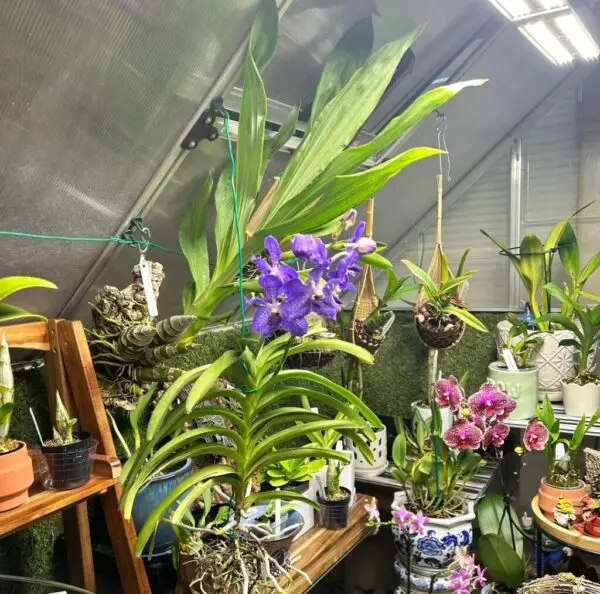
12. Feed Monthly with Organic Tonics
Natural supplements like seaweed extract or kelp tonic are powerful tools in orchid care when used sparingly. Apply a diluted solution to wet roots once a month to encourage stronger root tips, larger leaves, and overall resilience. These tonics act as natural growth stimulators and can jumpstart blooming cycles when combined with your regular fertilizer regimen. Use only on moist roots and never exceed label instructions to avoid overfeeding.
Vanda coerulea: Don’t pot it in traditional orchid bark—Vanda coerulea prefers to grow with its roots exposed for better oxygenation.
13. Keep Leaves Dust-Free
Clean, glossy leaves aren’t just for aesthetics—they also play a crucial role in photosynthesis and energy production. Dust, dirt, or water spots can block sunlight absorption, reducing your plant’s ability to fuel growth. Every two weeks, gently wipe each leaf with a damp, soft cloth or sponge. Clean foliage increases efficiency and supports the energy demands of blooming. A plant with clean, healthy leaves will be far more likely to flower on time.
Vanda coerulea: Clean roots monthly to remove dust or algae buildup that can block Vanda coerulea from absorbing moisture properly
14. Refresh the Basket or Mount Every 2–3 Years
Over time, even breathable wooden baskets can degrade, and root systems can become crowded or tangled. Repotting or remounting your Vanda coerulea every 2–3 years helps refresh its environment and encourages new root growth. Always repot after flowering, not during, to avoid stress. When roots are given fresh space and airflow, they respond with vigorous growth, often followed by the emergence of a flower spike.
Vanda coerulea: Prune any dead roots or flower spikes to keep Vanda coerulea tidy and to redirect energy to new growth.
15. Harness the Power of Morning Sunlight
Morning sunlight provides a soft yet energizing spectrum of light that helps jumpstart your orchid’s day. Position your plant near an east-facing window where it can enjoy several hours of gentle rays. This exposure boosts chlorophyll production, strengthens leaf tissue, and helps regulate your plant’s internal clock—all factors that contribute to stronger root development and earlier flower formation.
Vanda coerulea: Be patient—Vanda coerulea may take time to adapt, but consistent care will reward you with spectacular flowers.
16. Allow Roots to Grow Freely and Wild
Vanda coerulea’s aerial roots are its lifeline. These long, silver roots absorb moisture and nutrients from the air and play a major role in triggering the hormonal responses needed for blooming. Never trim healthy roots unless they are dry or dead. Instead, support their growth by keeping them misted and exposed to humidity. A robust root system is often the first sign that your orchid is preparing to bloom.
17. Avoid Overfeeding or Fertilizer Burn
While fertilizing is important, too much can backfire. Overfeeding leads to salt buildup, burned roots, and excessive leafy growth without blooms. Follow the “weakly, weekly” rule—dilute fertilizer to one-quarter or half strength and apply after watering, not before. Monitor your plant’s response closely. Signs of lush leaves but no buds could mean too much nitrogen. Consistent, gentle feeding promotes balance and steady progress toward blooming.
18. Prevent Pests Before They Settle
Mealybugs, spider mites, and scale insects are silent bloom killers. They sap nutrients and stress the plant just when it needs energy most. Inspect your orchid weekly, especially under leaves and around roots. Wipe down areas at the first sign of trouble and apply neem oil monthly as a preventative. Keeping pests away allows your Vanda coerulea: to stay healthy and focused on flower development instead of recovery.
19. Track Progress with a Plant Journal
A simple care log helps you spot patterns and improve results. Record details such as watering dates, light changes, fertilizer schedules, temperature fluctuations, and signs of new growth. Over time, you’ll notice what triggers a growth spurt or a bloom cycle. A journal takes out the guesswork and helps you replicate success year after year with your Vanda coerulea.
20. Be Consistent and Patient
There’s no shortcut for consistency. Vanda coerulea is a slow but steady orchid that rewards regular care over time. Missed waterings, sudden light changes, or poor feeding routines can cause setbacks that delay blooming. Stick to a stable schedule, observe your plant carefully, and make small adjustments as needed. When your orchid feels secure in its environment, it will reward you with flowers that are well worth the wait.
🗓️ Vanda coerulea: Blooming & Care Timetable
Task Frequency
Watering Daily (summer), 2x/week (winter)
Fertilizing Weekly (balanced), 2x/month (booster)
Humidity Mist Daily
Light Exposure 12–14 hours/day
Root Soaking Weekly
Pest Prevention Monthly
Repotting Every 2–3 years
💬 Final Thoughts
Helping your Vanda coerulea :bloom early is not about tricks or luck—it’s about dedication, understanding the plant’s natural rhythms, and consistently meeting its needs. While you may not see instant results, these 20 expert tips provide everything your orchid requires to bloom faster than expected. Each small habit—from misting daily to giving it a proper rest—builds up over time to create the perfect conditions for flowering. Be patient, stay observant, and trust the process. When those rare, sky-blue flowers finally open, the reward will be breathtaking.
💬 Frequently Asked Questions About Vanda coerulea
1
Why is Vanda coerulea unique, and what is it?
Vanda coerulea: is a rare and highly prized orchid species known for its striking bluish-purple flowers. Native to northeastern India and Southeast Asia, Vanda coerulea stands out for its unique flower color, cooler temperature tolerance, and long-lasting blooms. Orchid collectors admire Vanda coerulea for its exotic appeal and unmatched beauty in the orchid world.
2. How often should I water Vanda coerulea?
Watering Vanda coerulea depends on the season and your local climate. During hot months, Vanda coerulea needs daily watering or soaking to keep the roots hydrated. In cooler seasons, water every 2–3 days. Misting helps maintain humidity, but make sure Vanda coerulea roots dry between watering to prevent rot.
3. Can Vanda coerulea thrive indoors?
Yes, Vanda coerulea can grow well indoors if you provide proper light, humidity, and airflow. If you want bright, filtered light, put Vanda coerulea : close to a window that faces south or east.Use a humidifier or mist daily to maintain moisture levels. Hanging baskets and good ventilation help Vanda coerulea adjust comfortably to indoor growing.
4. What fertilizer works best for Vanda coerulea?
A balanced orchid fertilizer like 20-20-20 is excellent for supporting Vanda coerulea’s leaf and root growth. To encourage flowering, switch to a bloom booster high in phosphorus during pre-bloom months. Apply fertilizer weekly at half strength. Feeding consistently helps Vanda coerulea build strong reserves for more frequent blooming cycles.
5. When does Vanda coerulea typically bloom?
Vanda coerulea usually blooms in autumn through early winter, though under ideal conditions it may bloom more than once a year. Each flower spike of Vanda coerulea can hold 6 to 20 flat, wide blossoms. Its flowers are not only beautiful but also long-lasting, often staying fresh for several weeks.
6. What type of light does Vanda coerulea require?
Vanda coerulea prefers bright, indirect light that mimics the forest canopy of its natural habitat. Direct midday sun may scorch its leaves, so morning or filtered sunlight is ideal. If grown indoors, Vanda coerulea may benefit from supplemental grow lights to ensure it receives 12–14 hours of light daily.
7. What temperatures are best for Vanda coerulea ?
The ideal temperature range for Vanda coerulea is warm, between 65°F and 85°F (18 and 29°C).It can handle cooler temperatures better than most Vanda species, but still must be protected from frost. A nighttime drop in temperature can stimulate blooming, making Vanda coerulea a great candidate for temperate greenhouse growing.
8. Does Vanda coerulea need soil or potting mix?
No, Vanda coerulea is epiphytic and grows best with its roots exposed in baskets, on wooden slats, or mounted on bark. Potting it in traditional soil can suffocate its roots. For best results, keep Vanda coerulea in an airy, open environment where roots can breathe and absorb ambient moisture freely.
9. Why are the roots of my Vanda coerulea turning brown?
Brown roots on Vanda coerulea usually indicate overwatering or poor airflow. Healthy Vanda coerulea roots should be silvery-green when dry and turn bright green when wet. If they stay brown, check for rot, trim dead roots, and improve air circulation. Keeping roots healthy ensures Vanda coerulea :can flower regularly.
10. Is Vanda coerulea a rare orchid?
Yes, Vanda coerulea is considered rare due to its naturally blue flowers, which are uncommon in the orchid family. Wild populations of Vanda coerulea are protected, so most plants available today are cultivated or hybridized. Genuine Vanda coerulea specimens remain expensive and highly desirable to collectors and hobbyists.
11. How can I propagate Vanda coerulea?
Keikis, which are tiny plantlets that develop on the stem, are a frequent way to propagate Vanda coerulea Once these keikis develop several strong roots, they can be separated and grown independently. Though slow-growing, keiki propagation is the most accessible method for home growers to expand their Vanda coerulea collection successfully.
12. Can I grow Vanda coerulea from seed at home?
Growing Vanda coerulea from seed is extremely difficult without lab conditions, as the seeds require a symbiotic fungus to germinate. Most Vanda coerulea orchids available to consumers are produced in sterile labs through flasking. For home propagation, growing from keikis is far more practical and achievable.
13. How long do Vanda coerulea blooms last?
With proper care, the flowers of Vanda coerulea can last 4 to 8 weeks. High humidity, steady temperatures, and protection from cold drafts extend bloom life. Keeping Vanda coerulea stress-free during its blooming cycle helps it retain its flowers longer and encourages it to produce additional spikes in the future.
14. Where is the best place to buy Vanda coerulea?
Purchase Vanda coerulea from reputable orchid nurseries, online orchid specialists, or botanical gardens. Look for plants with green roots, firm leaves, and a healthy structure. Avoid sellers who offer blue orchids without scientific names—many falsely label dyed orchids as Vanda coerulea when they are not genuine.
15. How is Vanda coerulea different from other Vandas?
Vanda coerulea differs from most Vanda orchids by being naturally blue and tolerant of cooler temperatures. Its flatter flowers, extended blooming duration, and distinctive bluish tone set it apart. Unlike many hybrid Vandas, Vanda coerulea can thrive in environments with slightly less heat, making it more versatile for indoor growing.
